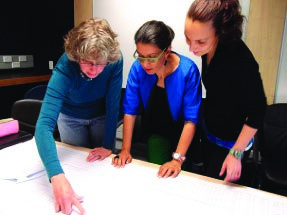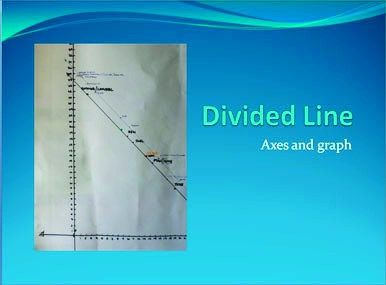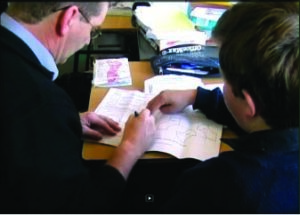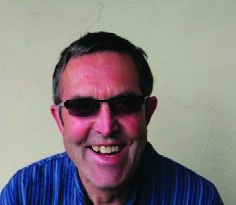Introduction
Many students struggle with introductory algebra and teachers have little to guide them to assist their students learn this important component of mathematics. The project on teaching algebra conceptually (TAC) was designed to explore and create teaching approaches to assist students in Years 9 and 10 to develop a conceptual understanding of algebra. The effect of these teaching approaches was documented by use of a diagnostic tool that assessed and made students’ knowledge and strategic thinking in algebra explicit.
Key findings
- Achievement in algebra can be enhanced by taking a structural perspective that provides high quality diagnostic assessment information to teachers.
- Effective teaching approaches that have an effect on student outcomes integrate algebra into the curriculum, rather than treating it as a separate topic.
- Effective teaching approaches include building a “toolbox” of knowledge and skills that students can use efficiently in their lives.
Major implications
- Evidence suggests that the algebra framework https://blogs.otago.ac.nz/tac/algebra-framework/ positively guides and informs teacher practice.
- The algebra diagnostic assessment tool measures student achievement, informs teacher practice, and helps identify next teaching steps.
- Teachers should be supported to recognise and model algebra in many contexts and should not pigeonhole it to a single block of teaching time on its own.
- A website https://blogs.otago.ac.nz/tac/ has been created to share our findings and to act as a platform for further development of the ideas. Teachers and researchers are invited to visit and contribute.
The research background
This project is an extension of the TLRI study carried out in 2006, and the work undertaken in 2007–10, funded by the Ministry of Education. It makes use of the diagnostic assessment tool developed in the previous TLRI study (Linsell et al., 2006) and results on student achievement from the Ministry of Education’s secondary numeracy project (snp) study (Linsell, 2010). our previous work detailed the strategies that students use to solve equations and the prerequisite knowledge required for implementing these strategies. However, there has been no research to date on teaching approaches that make use of these recent findings.
The current study is based on a conception of algebraic thinking as awareness of mathematical structure, rather than as a collection of rules and procedures to be learnt. The study takes a similar approach to the New Zealand numeracy development projects (ndps) by separating the algebraic strategies that students use from the prerequisite knowledge required, and by designing learning experiences that address the identified needs of the students.
Research questions
- How can algebra diagnostic assessment information be used for designing differentiated learning at Years 9 and 10?
- What is the effect of the teaching approaches on the most sophisticated strategies students are able to use to solve equations, find relationships between variables, and express generality?
- What is the effect of the teaching approaches on students’ understanding of inverse operations, arithmetic structure, equivalence, acceptance of lack of closure, and knowledge of algebraic notation and conventions?
Why these are important to learning and teaching in New Zealand
A large-scale study by Warren (2003) found that the majority of students in Queensland leave primary school with a limited awareness of mathematical structure and of arithmetic operations as general processes. Bednarz, Kieran, and Lee (1996) have shown that algebra in schools is often reduced to rules for transforming and solving equations, and these rules are often meaningless for students (Brekke, 2001). There is no evidence to suggest that the situation in New Zealand schools is any different from that overseas.
At the secondary school level, the emphasis within the number and algebra strand shifts from number towards algebra. The Best evidence synthesis (Bes) project (Anthony & Walshaw, 2007) identified a lack of outcomeslinked evidence about what works in the secondary school context. The results from this project help to address this gap and raise students’ achievement in algebra.
Methodology
The research was carried out over two years and the approach used employed both qualitative and quantitative methods. We assessed the effects on student outcomes by using case studies, pre- and post-data, and a comparison with a representative sample of the population (the Year 9 and 10 students from Linsell’s 2010 SNP study). For teaching approaches, case studies were employed.
We used a development of Linsell et al.’s (2006) diagnostic assessment tools to document the algebraic thinking of the students. A full description of the assessments and scoring rubrics for students’ strategies for solving equations, understanding of algebraic notation and convention, inverse operations, arithmetic structure, equivalence, and acceptance of lack of closure is given in Linsell (2010).
During 2010, a total of 99 students from five classes gave informed consent for the data to be used for research purposes, and in 2011, a total of 185 students from eight classes consented. In 2010, all the students studied were in Year 9, and in 2011 we investigated a mix of Year 9 and 10 students as well as a small Year 11 numeracy class.
The main phase of the project was spent in designing, trialling, and developing teaching approaches. These needed to be specific to the learning needs of the students and so there was a focus on differentiated learning. As well as considering the most sophisticated strategies that students were able to use, teaching had to address the prerequisite knowledge required by the students. In order to develop teaching approaches, Borko’s (2004) model of professional development was employed, which involved teachers capturing their lessons on video and sharing selected excerpts with the others in the project. There were regular meetings of the group, supported by the researchers. The experiences of the teachers were used to refine the teaching approaches for the other teachers to try.
Teaching approaches
Teaching approaches in the study were not uniform, but were responsive to the particular needs of each class of students and also reflected the teaching styles and beliefs of the teachers involved. There was, however, a great deal in common and a consensus was achieved on effective ways to help students learn algebra. effective teaching approaches involved: establishing what each student understands through assessment; showing students how algebra is everywhere in our lives; promoting algebraic thinking with rich and meaningful contexts; demonstrating the benefits of rigour and correct use of vocabulary; and building a “toolbox” of knowledge and skills that students can use appropriately and efficiently.
Assessment
We considered that it was essential to know where the students were at so that we could make decisions about next learning steps, especially as students came from a number of contributing schools and therefore had widely differing prior experiences. At the workshops, a great deal of time was spent poring over diagnostic assessment information. The purpose was to document the most sophisticated strategies that a student could use and to identify their prerequisite knowledge, not to generate a score. There was considerable discussion about the arithmetic skills and knowledge that many high school teachers might assume that their students would have learnt at primary school. Consistent with the findings of Warren (2003), the diagnostic assessment revealed that many students did not have a good understanding of arithmetic structure, inverse operations or equivalence. students’ knowledge of algebraic notation and conventions and acceptance of lack of closure were also documented, as well as their strategies for solving equations, expressing generality and finding relationships between variables. Teachers’ approaches with their classes and interventions with individual students throughout the project were guided by the detailed knowledge they had acquired.
Figure 1. Teachers examining assessment data.

Algebra everywhere
The teaching approaches rejected the common practice of teaching algebra as isolated units of work once a term or, even worse, once a year. Instead, the teachers integrated the teaching of algebraic thinking.
Throughout their programmes. For example, when teaching equivalent fractions such as 3⁄4 = 9⁄12 and 55⁄25 = 11⁄5 by multiplying or dividing numerators and denominators by the same factor, this was generalised to ac⁄ab = c⁄b. The generalisation, and the use of algebraic notation to describe the generalisation, was made explicit to the students. Teachers placed a great deal of emphasis on the patterns found when calculating with rational numbers and with rational expressions, including during topics such as geometry. Furthermore, the algebraic skills taught were used throughout the year in a variety of contexts and reinforced through regular maintenance.
Figure 2. Using geometry to teach algebra

Rigour and vocabulary
Observation of students’ work and discussions with them indicated that very informal written working and a lack of correct mathematical vocabulary were impediments to good mathematical practice and engagement in mathematical discourse. The teachers were particularly careful with correct use of mathematical vocabulary throughout the year. Any terms that were unfamiliar or ambiguous to the students were defined and written into the students’ notebooks. Teachers were careful that their board work modelled the correct setting out, and they insisted on their students meeting similar standards. They did not assume their students knew the conventions of notation, but explicitly taught the conventions. similarly, mathematical identities and laws were made explicit and expressed as generalisations using algebraic notation. The schools ensured that there was consistency from teacher to teacher and from one year level to the next.
Figure 3. Rigour used in explaining properties of exponents

The toolbox
When algebraic skills were identified, they were presented to the students as tools to put in their toolboxes. This metaphor was used to promote acceptance and understanding of the skills. These skills included, but were not limited to, substitution, manipulating terms, expanding brackets, factorising, and strategies for solving equations. number skills related to indices, integers, order of operations, basic facts, squares, cubes, and highest common factors were also placed in the students’ toolboxes. When solving problems in any context, students were encouraged to select and use tools purposefully. This approach avoided skills being taught in isolation, as students appreciated that these were tools that they would use frequently. Thus the skills became more readily transferrable.
Context
It was essential that students should perceive algebra as being meaningful, and a wide variety of contexts were used to ensure this. Furthermore, there were a number of interpretations of use of context. When solving problems in areas such as rational number, students were encouraged to use modelling approaches and set up equations to solve. science teachers were consulted to ensure that approaches to solving equations and using notation were consistent between mathematics and science lessons. Also, some of the teachers chose to develop thematic units aimed at developing algebraic concepts in holistic ways.
Figure 4. Example of a physical context

Student achievement
Strategies for solving equations
Previous work with secondary numeracy project (SNP) students (Linsell, 2010) has shown that many students are restricted to using unsophisticated strategies, such as guess and check, and may not even be able to use inverse operations for simple equations of the form ax = b . Furthermore, very few students at the end of Years 9 and 10 are able to solve equations formally by carrying out transformations (i.e., by doing the same thing to both sides). Baseline measurements in the current project were consistent with these previous findings. summative assessment at the end of the both years showed significant improvement from baseline in students’ use of strategies. Furthermore, Year 9 students at the end of 2010 and Year 10 students at the end of 2011 were significantly more sophisticated in their use of strategies than their counterparts in the 2010 SNP study. The major difference was that in the summative assessments in this TAC project, very few students were using unsophisticated strategies and most were solving equations of forms ax + b = c, x-a⁄b = c, and so on, by working backwards. However, for those students who had participated in the project for two years, only 26 percent of Year 10 students were able to use the most sophisticated strategy of carrying out transformations by doing the same thing to both sides.
Algebraic knowledge
Because knowledge of arithmetic structure, inverse operations, algebraic notation and convention, acceptance of lack of closure, and understanding of equivalence have been shown to have an effect on students’ strategies for solving equations (Linsell, 2010), the teachers took particular notice of student achievement in these areas for planning their teaching. During the first year of the project, all of the measures (other than knowledge of algebraic notation and convention) showed significant improvements from baseline to end-of-year assessment. similarly, during the second year of the project, all of the measures (other than knowledge of inverse operations) showed significant improvements from baseline to end-of-year assessment. Both Year 9 and Year 10 students’ scores on all five measures of algebraic knowledge at the end of the year were significantly higher than their counterparts in the 2010 SNP study.
Strategies for finding relationships between variables
During the first year of the project, we decided we wanted broader measures of student achievement than those used in the 2010 SNP study. In particular, we wanted to investigate how students found relationships between variables and how they expressed generality. Questions were therefore included in the baseline and end-of-year assessments in the second year of the study. It is well known that students find it difficult to determine relationships of the form y = ax + b when presented with tables of values (Hoyles & Küchemann, 2001; Trigueros & Ursini, 2001). We therefore included easier questions addressing additive and directly proportional relationships, and also questions that allowed students to find and make use of relationships even if they were not able to express them algebraically. Factor analysis revealed four latent traits, which we described as additive strategies, multiplicative strategies, use of algebraic conventions, and formal use of linear relationships. scores for additive and multiplicative strategies were very high at baseline and showed no significant changes at end-of-year assessment. There were, however, significant improvements in scores for use of algebraic conventions and formal use of linear relationships. At the end of the year and in spite of the improvement in formal use of linear relationships, only 29 percent of students were able to determine a relationship of the form y = ax + b when presented with a table of values.
Strategies for expressing generality
It has been known for a long time that students find it difficult to generate algebraic expressions for structured situations and operate on them (Lee, 1987). Most work with high school students has focused on situations that give rise to linear or quadratic expressions (Mason, graham, & Johnston-Wilder, 2005), so we decided to also include easier situations that could be described by expressions such as x + a or ax. At baseline, a large number of students were unable to generate even simple expressions such as these, but there were significant improvements by the end of the year in students’ ability to generate additive and multiplicative expressions. However, there was no significant change in students’ ability to generate expressions such as ax + b (only 45 percent at end-of-year assessment) or quadratic expressions (only 13 percent at end-of-year assessment).
Major implications for practice
This study has demonstrated that achievement in algebra can be enhanced by taking a structural perspective that provides high quality diagnostic assessment information to teachers and that integrates algebra into the curriculum, rather than treating it as a separate topic. Through the use of a draft framework for algebraic thinking and an associated diagnostic tool which reveals students’ algebraic knowledge and strategies, teachers are able to gain significant insights into their students’ algebraic world. This information is empowering for teachers.
Many students have poor understandings of arithmetic structure, inverse operations and equivalence. These fundamental concepts of mathematical structure need to be soundly understood for students to be able to use the more sophisticated strategies for solving equations, finding relationships between variables, and expressing generality. The teaching approaches used in this project have enabled students to progress from being restricted to the least sophisticated strategies. However, even when students have a firm foundation in arithmetic, the most sophisticated algebraic strategies are clearly difficult to master. Teachers should not underestimate the conceptual leap required for operating on unknowns and variables. Further research is required on teaching approaches that may facilitate the transitions to more sophisticated strategies.
What teachers do with diagnostic assessment information is critical. The teaching approaches which became clearly articulated and documented during this study strongly reflected the individual beliefs and pedagogies of the participating teachers. However, it was evident in discussion at workshops and in presentations of their collective work that the group felt strongly that their approaches were complementary and effectively addressed the identified needs of their students. Teachers placed importance on the diagnostic assessment information to inform them of their students’ strengths and weaknesses and in addressing these, they encouraged their students to “see algebra everywhere” and provided them with relevant and meaningful contexts for exploration.
A major goal had always been to develop teaching approaches for algebra that were consistent with the numeracy development projects (NDPs). This occurred to the extent that detailed diagnostic assessment information on students’ strategies and knowledge was gathered, a tentative framework for algebraic thinking was developed, and teaching was tailored to the needs of individuals. However, unlike in the numeracy development projects, students were not grouped for instruction according to strategy stage, nor was the NDP teaching model (Ministry of Education, 2008) used extensively. Instead, a variety of teaching approaches, more appropriate for the abstract nature of algebra, were developed. It was evident that just as students learn in different ways, teachers have individual and strongly held teaching philosophies, styles, and teaching approaches. A website https://blogs.otago.ac.nz/tac/ has been constructed to share the details of these approaches with teachers.
The format and content of the website acknowledges and reflects the diversity of teaching approaches developed by the participants who contributed their ideas. At the same time, the website is intended to be responsive to a diverse audience of teachers who come to use and build upon the ideas it presents. The website was chosen as the medium for sharing teaching strategies and ideas because it conveys more than just “activities” for teaching. The annotated work samples and videos illustrate not just the “what” but the more importantly the “how” and “why” of tasks and lessons. They model how we used assessment to identify what students could do and what they needed to learn, how we showed students that algebra is everywhere in our lives, how we promoted algebraic thinking with rich and meaningful contexts, how we demonstrated the benefits of rigour and correct use of vocabulary, and how we built a “toolbox” of knowledge and skills that students can use appropriately and efficiently.
References
Anthony, G., & Walshaw, M. (2007). Effective pedagogy in mathematics/pangarau best evidence synthesis iteration (BES). Wellington: Ministry of Education.
Bednarz, n., Kieran, C., & Lee, L. (1996). Approaches to algebra: perspectives for research and teaching. In N. Bednarz, C. Kieran & L. Lee (eds.), Approaches to algebra: Perspectives for research and teaching (pp. 3–12). Dordrecht: Kluwer Academic.
Borko, H. (2004). professional development and teacher learning: Mapping the terrain. Educational Researcher 33(8), 3–15.
Brekke, G. (2001). school algebra: primarily manipulations of empty symbols on a piece of paper? in H. Chick, K. Stacey, J. Vincent, & J. Vincent (eds.), 12th ICMI study conference: The future of the teaching and learning of algebra (pp. 96–102). Melbourne: university of Melbourne.
Hoyles, C., & Küchemann, d. (2001). Tracing development of students’ algebraic reasoning over time. In H. Chick, K. Stacey, J. Vincent, & J. Vincent (eds.), 12th ICMI study conference: The future of the teaching and learning of algebra (pp. 320–327). Melbourne: university of Melbourne.
Lee, L. (1987). The status and understanding of generalised algebraic statements by high school students. In J. C. Bergeron, N. Herscovics, & C. Kieran (eds.), 11th conference of the International Group for the Psychology of Mathematics Education (Vol. 1, pp. 316–323 Montreal, Canada: IGPME.
Linsell, C. (2010). secondary numeracy project students’ development of algebraic knowledge and strategies. In Ministry of Education (ed.), Findings from the New Zealand numeracy development projects 2009 (pp. 100–117). Wellington: Learning Media.
Linsell, C., Savell, J., Johnston, N., Bell, M., McAuslan, E., & Bell, J. (2006). Early algebraic thinking: Links to numeracy. Retrieved from http://www.tlri.org.nz/sites/default/files/projects/9242_summaryreport.pdf
Mason, J., Graham, A., & Johnston-Wilder, S. (2005). Developing thinking in algebra. London: Thousand Oaks.
Ministry of Education. (2008). Getting started. Wellington: Ministry of Education.
Trigueros, M., & Ursini, S. (2001). Approaching the study of algebra through the concept of variable. In H. Chick, K. Stacey, J. Vincent & J. Vincent (eds.), 12th ICMI study conference: The future of the teaching and learning of algebra (pp. 598–605). Melbourne: University of Melbourne.
Warren, E. (2003). The role of arithmetic structure in the transition from arithmetic to algebra. Mathematics Education Research Journal, 15(2), 122–137.
Project team
Chris Linsell, University of Otago College of Education
Lynn Tozer, Independent Consultant
Megan Anakin, University of Otago College of Education
Eric McAuslan, King’s High School
Anna Cox, St Hilda’s Collegiate
Garry Turner, King’s High School
Rachel Jones, St Hilda’s Collegiate
Donna Smith, St Hilda’s Collegiate





